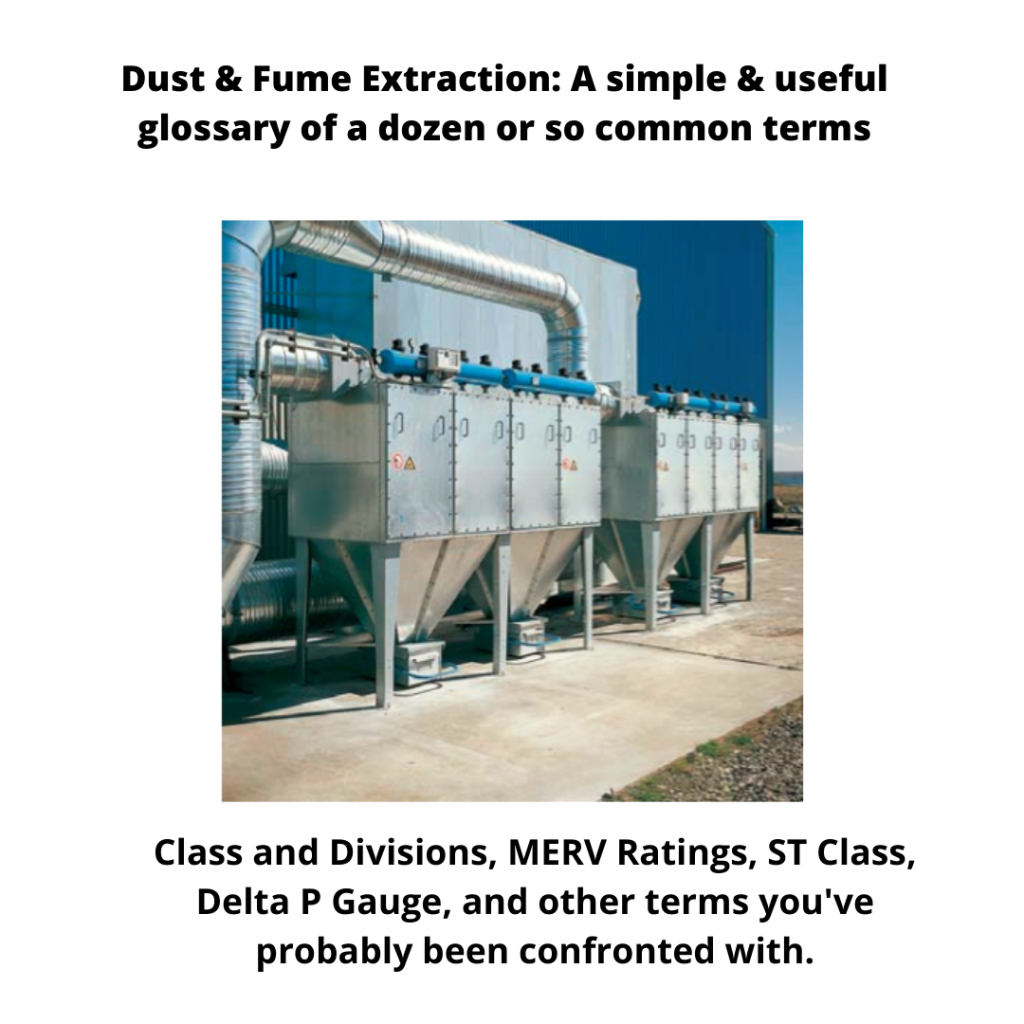Bar – a unit of pressure (metric). 1 bar = 100,000 Pascals (PA). 100,00 Pa is marginally less than the average atmospheric pressure at sea level.
Class I – Gas and Vapour Environments. Class I locations are considered hazardous due to the presence of gases and vapors that are deemed to be in sufficient enough quantities in the air to facilitate an explosion. Locations identified as Class I require that enclosures and fittings be explosion proof. Class I locations are further divided into Divisions and Zones. For more details on Zones please see the separate details provided in this alphabetized list.
- Division 1 – a Class I location where the hazardous atmosphere is expected to be present during normal operations on a continuous, intermittent, or periodic basis.
- Division 2 – a Class I location in which volatile liquids or gases are handled, processed, or used, but in which they are normally confined safely inside closed containers or closed systems. In Class I Division 2 scenarios these hazardous gases and vapors can escape only in the event of accidental rupture and/or the breakdown of the containers or systems.
Class II – Locations involving the presence of combustible dust. In order for a location to be deemed as Class II the dust must be present in sufficient enough quantities for an explosive hazard to exist. Furthermore, to be considered “dust”, the combustible material must consist of particles no greater than 420 microns (0.420 mm), and as such will pass through a Number 40 sieve. Class II locations are further divided into Division 1 and Division 2.
- Division 1 – location whereby combustible dust is found to be suspended in the air in sufficient enough quantities to produce ignition, or where mechanical failure or abnormal operation of plant equipment may cause an explosion or ignition of the dust-air mixture. Furthermore, Division 1 also includes situations where electrically conductive dust, while not suspended in the air, has settled on equipment permitting the electrically conducive dust particles to potentially penetrate the openings in the equipment which may then create the potential for electrical failure.
- Division 2 – locations where combustible dust is not normally present in the air in sufficient enough quantities to produce an explosion, and dust accumulations are not in sufficient enough quantities to interfere with the normal operation of electrical equipment. Class II Division 2 locations include facilities where dust may be suspended in the air only as a result of infrequent malfunctioning or handling of processing equipment, as well as those locations where dust accumulation may be on or near electrical equipment in sufficient enough quantities to disrupt the safe dissipation of heat from said equipment; or may be ignitable by the abnormal operation or failure of the electrical equipment.
Delta P Gauge – measures the differential pressure between the upstream port, and the downstream port, the purpose of which is to provide a notification when a filter, etc, needs to be changed. Common units of measure are Inches of Water, Inches of Water Column, and Inches of Water Gauge.
HEPA Filter – High Efficiency Particulate Air Filter. HEPA filters are 99.97% efficient for particles as small as 0.3 microns.
Jet Cap – installed at the top of an exhaust stack to prevent rain from entering the system
Kst – the maximum rate of explosion pressure rise of dust clouds
MERV Ratings – Minimum Efficiency Reporting Value.
MERV ratings were created in the mid 80s by the American Society of Heating Refrigeration and Air Conditioning Engineers (ASHRAE) in order be able to easily evaluate the effectives of air filters. They designed the scale to illustrate the worst-case performance of a filter dealing with particles ranging from 0.3 to 10 micrometers.MERV ratings range from 1 to 16, with higher ratings being indicative of greater filter proficiency. As an example, a MERV 16 filter can effectively capture 95% of the particles over the full range.
Micron (µm)– 1/1000 of a millimeter. As a frame of reference, a human hair, roughly speaking, can be as small as 17 µm in thickness, and as thick as 100 µm.
NFPA – National Fire Protection Association. Visit https://www.nfpa.org/. For Canadian equipment installations, please consult with each respective province and territory (eg. Ontario Fire Code). The use of indoor enclosureless dust collectors, for example, will have regulations pertaining to: the type of material they can be used for (dust pickup only, vs. metal debris from grinding operations), their maximum air handling capacity (cfm), fan motor type, when the collected dust needs to be removed, prohibitions on use near building exits and areas frequently occupied by people, as well as the distance each collector needs to be separated from one another.
Pmax – the maximum explosion pressure of dust clouds
Rotary Air Lock – a device used to control the flow of discharge material from a dust collector by maintaining a seal. The discharge falls from the hopper into the rotary air lock. Paddle wheels with rubber extensions that keep the system properly sealed collect the discharge. A motor rotates the paddle wheels at a controlled speed which permits the particles to exit from the bottom of the system without breaking the seal.
Spark Traps – a device fitted in ductwork between the extraction site, and the corresponding dust collector. They are commonly used in metal cutting and grinding applications. In short, a Spark Trap creates turbulence in the air flow, consequently directing sparks towards the walls of the Spark Trap. This causes the sparks and embers to lose heat, thus reducing their capacity to start a fire. NFPA standards strongly recommend the use of Spark Traps as part of a comprehensive fire prevention system.
Static Pressure – resistance against air flow
- ST Class
- ST Class 0 = Kst value = 0
- ST Class 1 = Kst value less than 200 bar m/sec
- ST Class 2 = Kst value between 200 and 300 bar m/second
- ST Class 3 = Kst value greater than 300 bar m/second
ST Ratings – determine the potential severity of an explosion. The ratings range from ST0 to ST3, with ST3 being the most severe. ST ratings are determined by the resulting Kst value of the laboratory test. With explosive testing you are going to come across Kst ratings, as well as Pmax. Pmax ratings determine the maximum explosion pressure of dust clouds, while Kst measures the maximum rate of explosion pressure rise of dust clouds. The test is carried out in a 20 litre device which creates a highly turbulent state in an effort to simulate the most severe conditions. A particular amount of the test material (dust) is placed inside the container, after which the explosion chamber is evacuated to 0.4 absolute bar. Once this has been achieved a test sequence is initiated to pressurize the dust container to 20 bar gauge, and then a fast-acting valve on the dust container outlet is opened to allow material into the explosion chamber. The dust is distributed evenly within the explosion chamber via a rebound nozzle, at which time the control system activates two 5 KJ chemical igniters at the chamber’s centre, 60 milliseconds after the dust has been properly dispersed. The resulting explosion pressures are measured by piezo-electric pressure transducers. Three tests are conducted to ensure a thorough and proper test. From these three tests the arithmetic mean of the values is determined. The Kst value = cube root of volume x explosion pressure rise.
Kst and Pmax values are required to make proper determinations concerning explosion venting, explosion suppression, and explosion containment.
TEFC Motor (a Totally Enclosed Fan-Cooled Motor) – an electric motor fitted with an enclosure that does not permit outside air to freely circulate in the interior of the motor. To help keep the motor cool an external fan blows air over the frame of the motor.
Water Column – inches of water, inches of water gauge, inches of water column. These units are typically used to measure pressure differentials. Inches of water is defined as the pressure exerted by a column of water 1 inch in height at certain defined conditions. With a water temperature of 4C (39.2F), when pure water is at its highest density, and assuming the standard acceleration of gravity, 1 inch of water is approximately 249.082 pascals, or roughly 0.3612 pounds-force per square inch. In many instances we allow for 4-5” of static pressure to compensate for dirty filters when sizing the fan for a system, in addition to the static pressure associated with the ductwork.
Zones – Areas that exhibit the potential for explosive atmospheres are divided into 6 zones, each dependent on how frequent and for how long a potentially explosive atmosphere exists. When compiling the different numbers for the Zones distinctions were made for combustible gases, mists, vapors, and dust. A very good resource for this is https://www.engineeringtoolbox.com/hazardous-areas-classification-d_345.html
Gases, mists, and vapors – 0, 1, 2 (severity increases as one moves from 2 to 0). For instance, in Zone 0 all equipment present must have been designed in such a way that should a type of protection fail, or two faults occur, sufficient explosion protection will be provided.
- Zone 0 – sufficient concentrations of ignitable flammable gases or vapors are present on a continuous basis, or if not continuously for long and extended periods of time.
- Zone 1 – areas whereby there is a reasonable likelihood that sufficient concentrations of ignitable gases or vapors will be present during normal operating conditions.
- Zone 2 – ignitable concentrations of flammable gases or vapors are not likely to occur during normal operations, and when they do so they are present for only short periods of time
Dust – 20, 21, 22 – (severity increases as one moves from Zone 22 to Zone 20).
- Zone 20 – much like Zone 0 when discussing combustible gases, Zone 20 is an area whereby sufficient quantities of combustible dust are present continuously, or, if not continuously for long and extended periods of time.
- Zone 21 – sufficient quantities of combustible dust are likely to be present during normal operating conditions.
- Zone 22 – an area where combustible dust is not likely to be present, and if they do so for only for very short periods of time.


